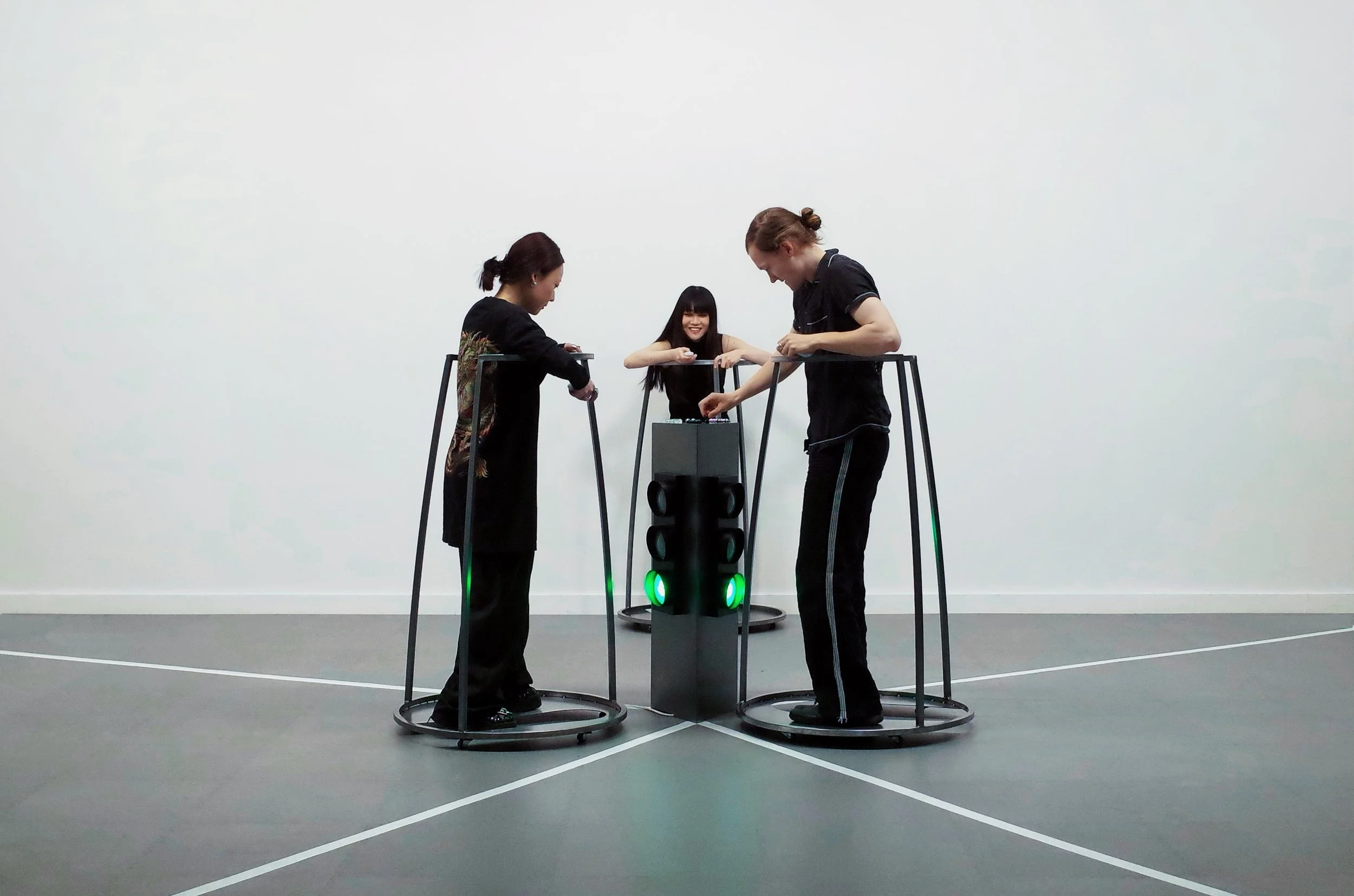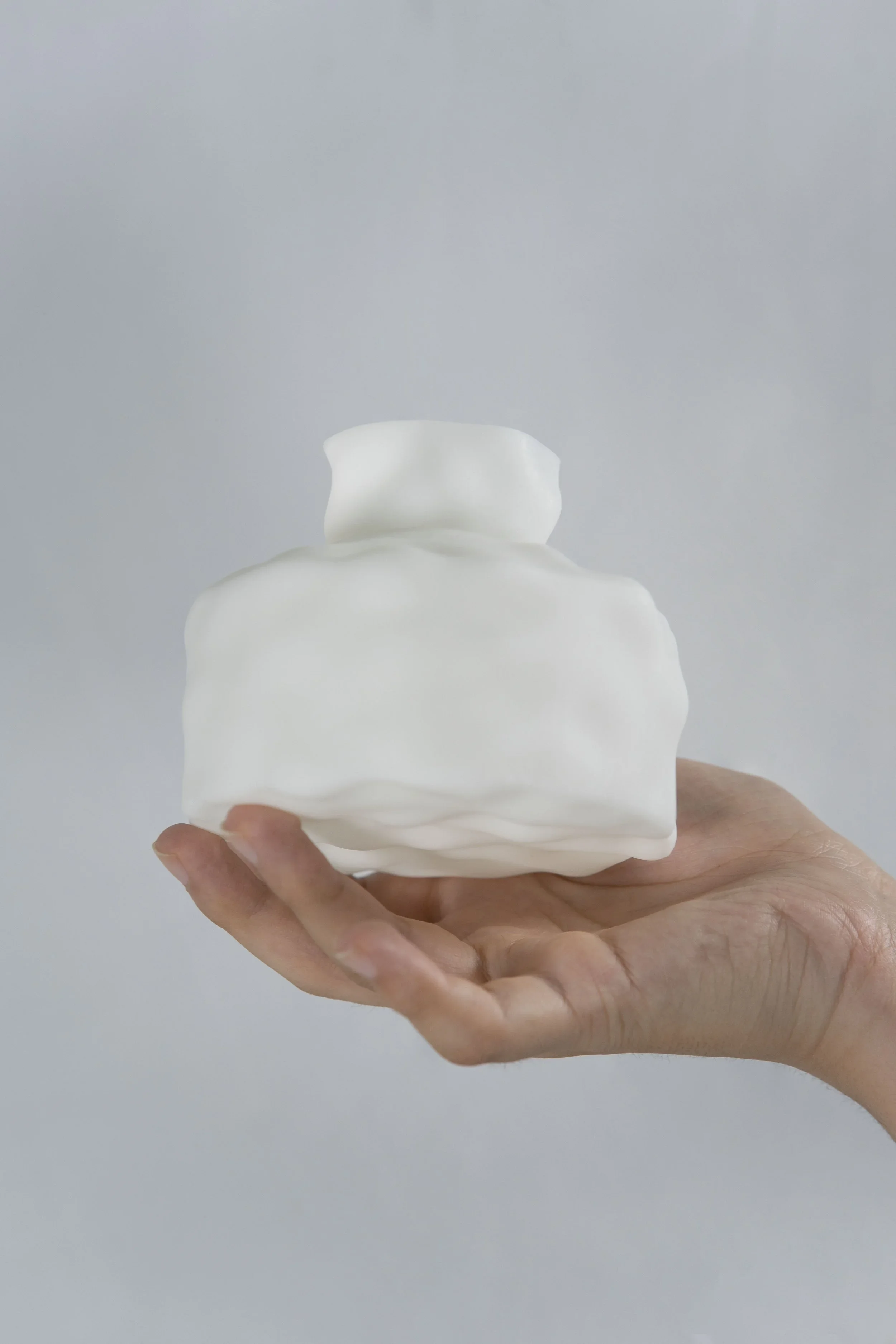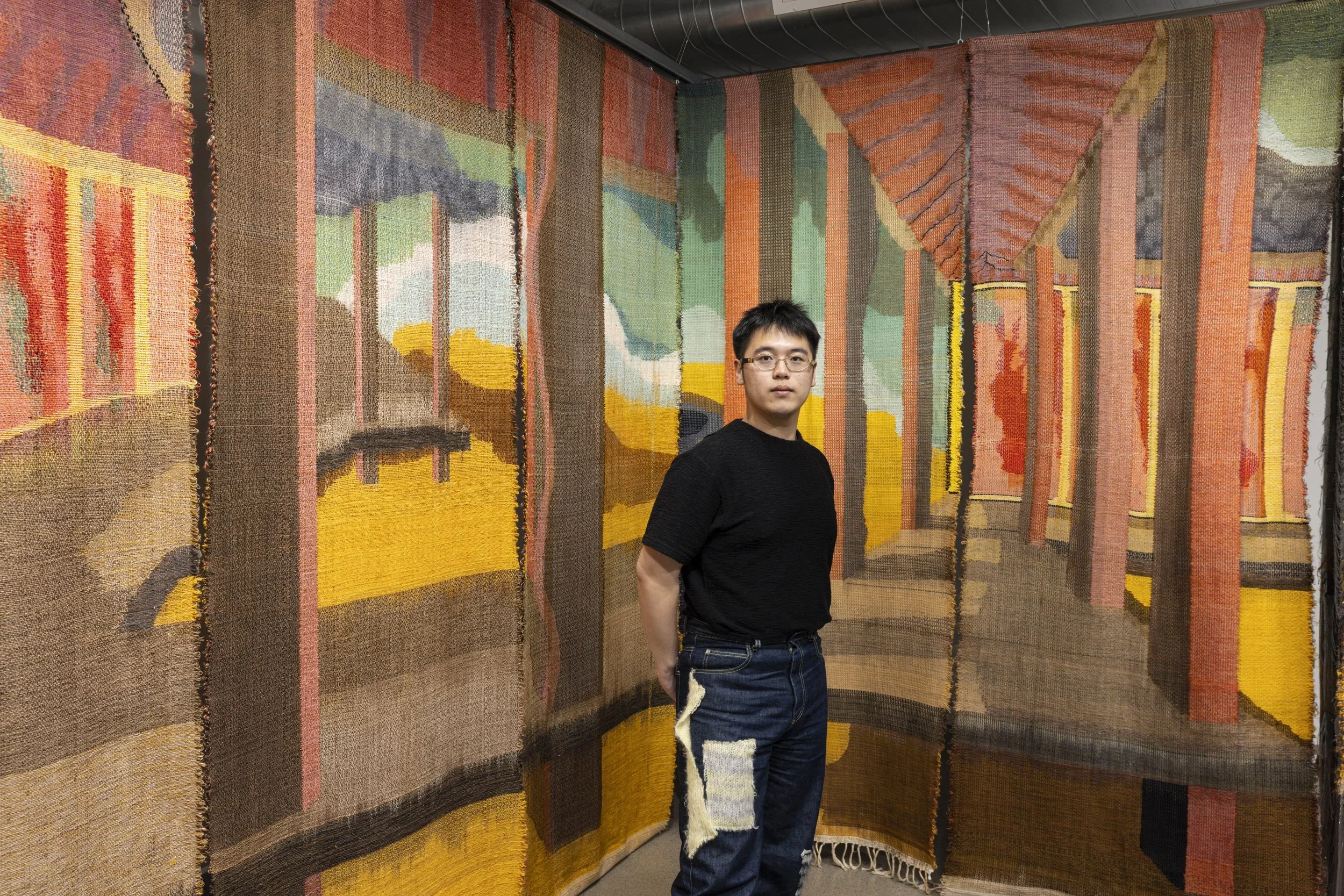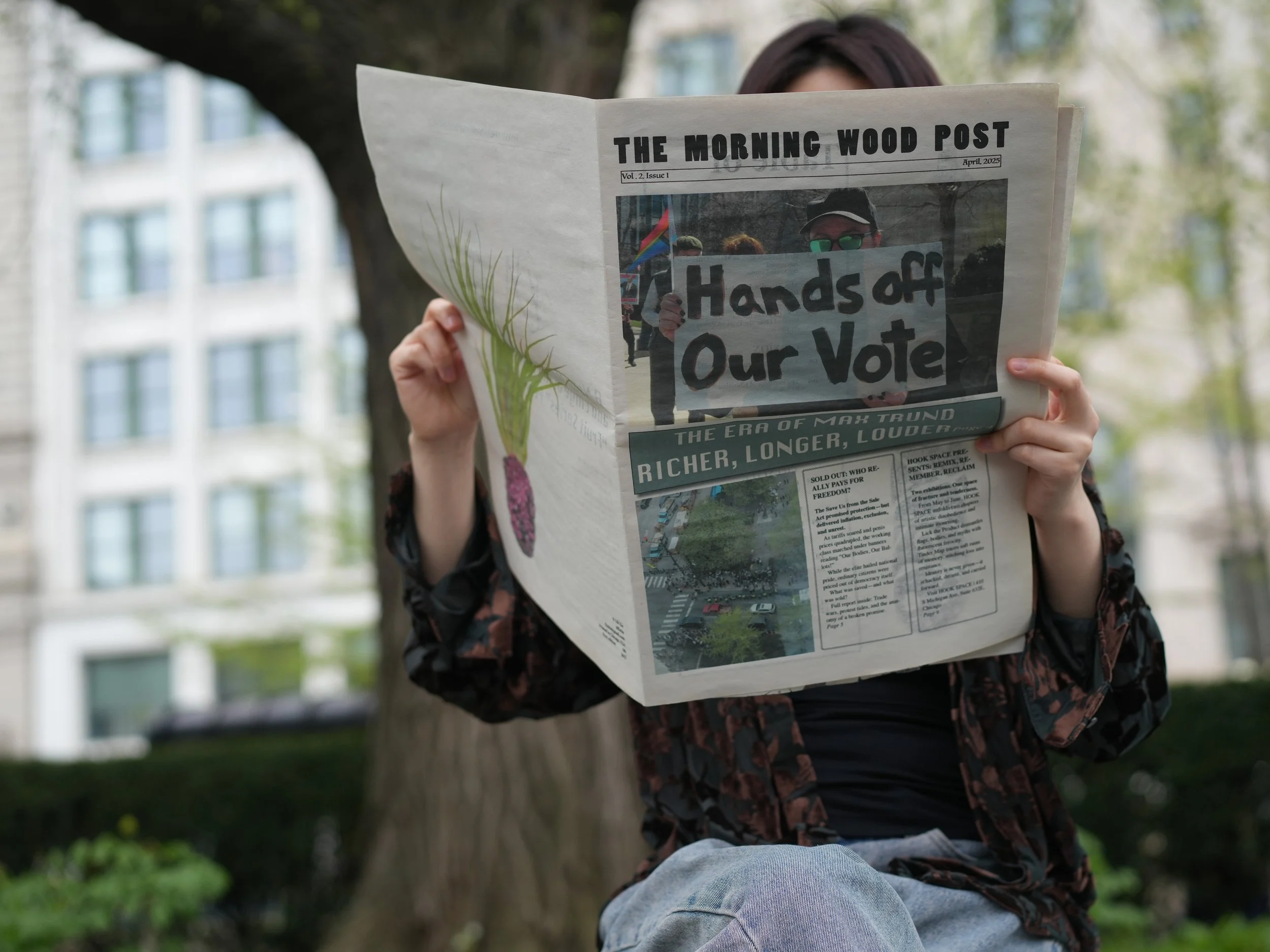10 Questions with Carolina Serrano
Featured COVER artist - ISSUE08
Carolina Serrano (Funchal, Portugal, 1994), lives and works in Cologne, Germany.
Serrano finished the Masters in Sculpture at the Faculdade de Belas-Artes of the Universidade de Lisboa in 2018, with the dissertation “The spiritual dimension of Sculpture through the work of XIX artists”.
In 2017, Serrano completed the Post-Graduation in Art Curatorship at the Faculdade de Ciências Sociais e Humanas – Universidade Nova de Lisboa and in 2015 the Degree in Sculpture at the Faculdade de Belas-Artes of the Universidade de Lisboa.
Carolina Serrano presented two solo shows in 2020: Entre o polegar e o indicador, text by Alexandre Melo, UMA LULIK_ Contemporary Art Gallery (Lisboa, 2020) and Para sempre prestes a terminar, curated by Mattia Tosti, Galeria FOCO (Lisboa, 2020).
Among the group exhibitions in which Serrano participated, the following stands out: Grão—Residência Artística de Investigação, Capitania do Museu de Aveiro (Aveiro, 2020); XV Edição do Prémio de Pintura e Escultura de Sintra D. Fernando II, MU.SA- Museu das Artes de Sintra (Sintra, 2020); Tarimba apresenta a ESQUINA, curated and produced by Tarimba Coletivo and BECO, Esquina Atelier (Lisboa, 2019); Estouro, curated by Beatriz Coelho, Francisca Gigante and Inês Espada Vieira, Espaço Cultural Mercês, (Lisboa, 2019); 5a Bienal Internacional de Arte de Espinho, Museu Municipal de Espinho (Espinho, 2019); I will take the risk, curated by Carolina Trigueiros and TH Studio, Tomaz Hipólito Studio (Lisboa, 2019); Singular Pace, curated by Helena Mendes Pereira, Zet Gallery (Braga, 2018); Inside/Outside, Palácio do Marquês de Pombal (Oeiras, 2015).
In 2018 Serrano received the SHAIRART G-ABA Award.
carolinaserrano.net | @carolinas.serrano
Carolina Serrano
ARTIST STATEMENT
Carolina Serrano is an artist whose artistic practice develops in the field of sculpture. She was born in Portugal and did her art studies in Lisbon, and live in Cologne, Germany since 2020.
Serrano’s theoretical research revolves around the sphere of the temporality of Sculpture, a sphere that is uncommon in thought to the fence of this discipline. Because when we think about Sculpture, we usually think about matter in space. Time, this intangible and impalpable element, because of its immateriality, seems incompatible as a dimension to the sculptural construction.
However, Carolina Serrano wonders if time can be used as a sculptural matter.
How to carve with incorporeity, invisibility, intangibility? How to build a sculpture with time?
The use of paraffin (commonly used as fuel and in the making of candles) in conjunction with fire (as a primordial element alive in the observer's imagination and memory) is what, until now, has enabled her to come closer to being able to build a sculpture with time.
Because when a flame consumes a candle, that inanimate and inert object gains time, that is, it acquires a temporal dimension as it becomes mortal. The object comes into being in the 'time' that is ours, acquiring, as we acquired at birth, a death sentence.
In Serrano’s work, this act of 'receiving life' through self-destruction is, however, hypothetical, it occurs as a possibility, as a mental fuse.
The artist is particularly interested in working on the disturbing and mysterious cleavage between what is real and what is illusory, between what is visible and what is invisible, between what is palpable and what is immaterial.
Um momento de trégua, Paraffin, wood, 90×30×23 cm, 2020 - © UMA LULIK_& Bruno Lopes. Galerie Alex Serra
The work "Um momento de trégua” [A moment of truce] can be seen as a rhomboid shape that contains within itself a negative shape - a cylinder. In turn, inside that negative cylinder there is a cone, which comes out of the larger shape. However, this smaller cone only protrudes a little, as if it were afraid of the "world outside" and was cautiously and slowly taking steps to abandon the shape of the rhombus, hence the title.
This sculpture may also appear to have a femimine erotic connotation. It is made of paraffin wax, a material that resembles both the touch and the texture of the human skin.
GET YOUR LIMITED EDITION PRINT >>
INTERVIEW
Hello Carolina, you are our featured Cover Artist for ISSUE08 magazine. First of all, describe yourself in 3 words.
(to) Feel, (to) Think, (to) Try.
Faz aí a tua casa, Paraffin, Wood, fabric, spotlights, hinges, 237x300x50 cm, 2020 © UMA LULIK_& Bruno Lopes. UMA LULIK_
A work like Faz aí a tua casa [Built your home there] (2020) can be compared to an oratory (or at least to its shape), but it can also be looked as a play with the notion of “shaped canvas”, linking painting and object in a language akin to installation, which prioritizes a play of light and shadow (Alexandre Melo).
In this work we can see the shadows of the two "oratory doors" that intersect one another in the meadle of the instalation forming a darker shadow. The shape of that darker shadow is copied and mimicked onto paraffin-embedded fabric (materializing the shadow) and that fabric element is inverted and placed in the same place where the intersection of the two shadows is projected.
By materializing the shadow and also make it an object, that is, making an immutable and impossible "shadow" that is out of step with the sensorial reality, is because maybe there is another reality, another dimension where another flow of light manifests itself. The questions is: Where is that invisible light that causes effects apprehended by our human eye?
Now, let's go a little deeper. How did you start making art? And when did you first get interested in sculpture?
In a more considerate way when I followed my studies in a secondary school in Lisbon which specialized in art education. I discovered that my artistic thoughts were happening through images of three-dimensional objects when, as a 17-year-old student in that school, was asked to make a figurine for a play, and I decided to make a grotesque-looking full body sculpture for the actress to wear on her back and head, as if she were carrying her own weight on her back, the weight of her existence. There was the presence of two bodies, that of the actress seen from the front, and that of the sculpture/figure seen from behind. The question of duality-suffering as an intrinsically human characteristic and of Sculpture as thought was already present in my work without my knowing it.
In your recent works, you use paraffin wax "because of the theoretical and conceptual possibilities that this material can originate in the field of the observer's imagination." Can you explain this a little further to our readers?
One of those possibilities - and the one that interests me the most - is the temporal dimension of Sculpture. For, I ask myself if time can be used as a material. Paraffin (usually used as fuel and recurrently used in the making of candles) together with fire (as a living element in the imagination and memory of the observer) is what, until now, has allowed me to come closest to building a sculpture with "time".
When we think of the idea of a flame consuming a candle, this inert object "gains" time, that is, it acquires a temporal dimension because it becomes extinguishable. The object starts to exist in the 'time' that is ours by acquiring, as we acquire at birth, a death sentence. In my work, by using paraffin and sometimes the candle-wick, this act of 'receiving life' through self-destruction is, however, hypothetical, it occurs as a possibility in the observer's imagination. The action, by being 'activated' by the viewer’s mind occurs both in the sculpture he sees, but also at the same time within himself.
Paraffin comes also as a substitute for the physical and spiritual body. Sometimes when I visit Cathedrals, I like to look at the holders for placing devotional candles, because all those trembling flames are of people who have been there to lit them, and who are now somewhere in their own affairs. But when I look at those holders those people are there in front of me present in those various spots of light. Something like a transubstantiation happens. And with the sculptures the same.
Onde eu e tu estamos, Solid paraffin and liquid paraffin, 20,5×15×15 cm, 2020 © UMA LULIK_& Bruno Lopes and © Galeria FOCO & Photodocumenta. UMA LULIK_
"Onde eu e tu estamos" [Where you and I are] is a sculpture made of solid paraffin and liquid paraffin. This work, due to its circular shape, can resemble a well. When we think of a well, we usually associate it with a circular and deep cavity usually lined by walls in order to serve as a water reserve. We also associate it with a vertical passage or channel, or an abyss.
When peering into the interior of this sculpture, the observer can see his own reflection, because inside the outer circular shape was poured liquid paraffin mixed with black pigment. The liquid paraffin mirrors anyone who looks at it. The title -Where you and I are - refers to the awareness that we are that "well", that is, we are beings of immeasurable depth, with our own abyss, and, in this sculpture, we can see ourselves in our own reflection.
Your sculptures are minimal objects that convey contrasting ideas, such as light and shadow, destruction and appearance, interior and exterior, and full and empty. Why do you use this visual language? And what does your art aim to say to the viewers?
Who knows, that maybe the viewers see themselves by seeing my work. That they see themselves in the mirror. Just like the flames in the cathedrals that, deep down, are absent presences of various people. If I wish sculptures to be extensions of ourselves, knowing that we are beings that wander and oscillate in time without being able to control it or pacify ourselves with it (because time is finite to us and escapes us), then they must seek to be true mirrors. Since we are beings of antagonism and contradiction, since we are beings of error and, at the same time, of glory, the sculptures must be reflections that are exact and simultaneously dubious, complex and at the same time simple. However, it is also necessary to know that polishing that mirror to its sharpness - that is, understanding what it is to be human - is a task possibly doomed to have no end.
What do you see as the strengths of your project, both visually or conceptually?
Perhaps aiming to create works that have in themselves a formal dispossession, an irremediable simplicity. I try not needing to either add or take more away to the point that, in one extreme by wanting to remove more, one can see the bone.
Often the energy of a work is channelled in the space between two polarities: between the emptiness and the fullness, the internal and the external... It is necessary that the works are in that space "in between", so that we, in them, can recognize ourselves in the reflection of a mirror, seeing at the same time both the error and the glory.
The idea of the possibility of self-destruction, of the destruction of the body (paraffin/ours) and the idea of ascension through vanishing, and of the temporal dimension that are somehow present in my sculpture, are deeply human. Basically, it' s an attempt to blow or even scratch the little hole that each of us has open in our chests and just won't close, won't close.
Tell us about the process of creating your work. What is your artistic routine when working? Any aspects of your work do you pay particular attention to?
Usually the "unborn" sculptures first appear in my mind as an idea in the form of an image. Sometimes I see their figures on the walls, on the ceilings, in the corners of the room. Sometimes I retain images that I see on the street: a metal fence, a dark window, two half-closed curtains, and which can later become a drawing of a work if a mental image appears from that.
I transfer those images of sculptures that I see in my mind to my notebook, and I usually write down a few words, or half sentences, which are basically what the image suggests to me in verb form or even technical aspects of it.
Later, sometimes much later, I review my notebooks, flip through them all, and in the middle of the pages there is an image (an unborn sculpture) that stands out for some reason. As I see it, this one is ready to come into being and the next step is to materialize it, to make it exist in the world. The others are still there in the notebook, waiting. Maybe many will never be born. Then things become more technical, and I have to think about how to build it, how to engineer it. I have to think about the measurements, the cuts, the quantities. When I work for an exhibition, or trace a specific intention of work production, usually my working rules and my discipline are strict. I like to work during the day, from early morning until late afternoon. Every single day. After this, after everything is ready, there is a resting period for me, and later on everything repeats itself.
Às trinta e duas e trinta. © Carolina Serrano
Perdoa, deixa passar (prosti, propusti) © Carolina Serrano
Is there one thing you have discovered, or a lesson you have learned, over the last year due to the pandemic you will keep with you in the future?
Be even more attentive, be even more aware.
You work with a lot of galleries and have exhibited extensively over the past years. What do you think about the art community and market today?
I work with two galleries: UMA LULIK_ Gallery in Lisbon and, more recently, with a new gallery in Cologne, Galerie Alex Serra, which will open very soon, dependent on the pandemic situation in Germany. Regarding the art market and the art community, I try not to think about it too much.
Os amantes, Paraffin, candle-wick, 111x114x17 cm, 2020 © Galeria FOCO & Photodocumenta. Galerie Alex Serra
This work's name is Os amantes, that is The Lovers and it is made interely of paraffin. We can see in this sculpture two cylindrical shapes that are crossed from one end to the other by a horizontal line that has the shape of a plumbing pipe and that connects them. We can also see a vertical line also with the shape of a plumbing pipe that connects with the horizontal line, and in the place were those two lines intersect we see a hole with a candle-wick. The candle-wick is an element of light and spirituality but also an element of destruction. If we imagine that candle-wick on fire we would "see" (imagine) the horizontal element of the sculpture broking, that is, the "lovers" connection broking. But exactly at the same time we would "see" the light and the flame of that relation. And maybe at that time we would think that even though the fisical body is being destroyd, the spiritual connection remains.
What are you working on now, and what are your plans for the future? Anything exciting you can tell us about?
After my participation in Artissima 2020, with UMA LULIK_ Gallery, which took place in online format, it seems that finally in this year of 2021 presential fairs are starting to happen. So, regarding art fairs, as far as I know now, I will participate with the same gallery at Drawing Room Madrid that will happen in the last week of May. I am also starting the project for a solo exhibition in Germany, at Galerie Alex Serra, which will take place this year if the pandemic situation stabilizes. I also have on my agenda a possible exhibition with a public institution in Berlin for 2022.
Finally, what is one thing you hope to achieve in 2021?
“Mehr Licht! Mehr Licht!”



![Um momento de trégua, Paraffin, wood, 90×30×23 cm, 2020 - © UMA LULIK_& Bruno Lopes. Galerie Alex SerraThe work "Um momento de trégua” [A moment of truce] can be seen as a rhomboid shape that contains within itself a negative shape - a cylinder. In turn, inside that negative cylinder there is a cone, which comes out of the larger shape. However, this smaller cone only protrudes a little, as if it were afraid of the "world outside" and was cautiously and slowly taking steps to abandon the shape of the rhombus, hence the title. This sculpture may also appear to have a femimine erotic connotation. It is made of paraffin wax, a material that resembles both the touch and the texture of the human skin.](https://images.squarespace-cdn.com/content/v1/5a02e24901002767b723f9e8/1620722254159-Q0CSVD381MT2DSOF2AYP/Um+momento+de+tr%C3%A9gua_+Carolina+Serrano.jpg)


![Faz aí a tua casa, Paraffin, Wood, fabric, spotlights, hinges, 237x300x50 cm, 2020 © UMA LULIK_& Bruno Lopes. UMA LULIK_A work like Faz aí a tua casa [Built your home there] (2020) can be compared to an oratory (or at least to its shape), but it can also be looked as a play with the notion of “shaped canvas”, linking painting and object in a language akin to installation, which prioritizes a play of light and shadow (Alexandre Melo). In this work we can see the shadows of the two "oratory doors" that intersect one another in the meadle of the instalation forming a darker shadow. The shape of that darker shadow is copied and mimicked onto paraffin-embedded fabric (materializing the shadow) and that fabric element is inverted and placed in the same place where the intersection of the two shadows is projected. By materializing the shadow and also make it an object, that is, making an immutable and impossible "shadow" that is out of step with the sensorial reality, is because maybe there is another reality, another dimension where another flow of light manifests itself. The questions is: Where is that invisible light that causes effects apprehended by our human eye?](https://images.squarespace-cdn.com/content/v1/5a02e24901002767b723f9e8/1620722462101-9MAUCHGPSW0QVS8URF8T/Serrano%2C+Carolina+-+Faz+a%C3%AD+a+tua+casa.jpg)

![Onde eu e tu estamos, Solid paraffin and liquid paraffin, 20,5×15×15 cm, 2020 © UMA LULIK_& Bruno Lopes and © Galeria FOCO & Photodocumenta. UMA LULIK_"Onde eu e tu estamos" [Where you and I are] is a sculpture made of solid paraffin and liquid paraffin. This work, due to its circular shape, can resemble a well. When we think of a well, we usually associate it with a circular and deep cavity usually lined by walls in order to serve as a water reserve. We also associate it with a vertical passage or channel, or an abyss. When peering into the interior of this sculpture, the observer can see his own reflection, because inside the outer circular shape was poured liquid paraffin mixed with black pigment. The liquid paraffin mirrors anyone who looks at it. The title -Where you and I are - refers to the awareness that we are that "well", that is, we are beings of immeasurable depth, with our own abyss, and, in this sculpture, we can see ourselves in our own reflection.](https://images.squarespace-cdn.com/content/v1/5a02e24901002767b723f9e8/1620722694561-KYS45Q2Z42XD5TSPRFP8/Onde+eu+e+tu+estamos_+Carolina+Serrano.jpg)


















